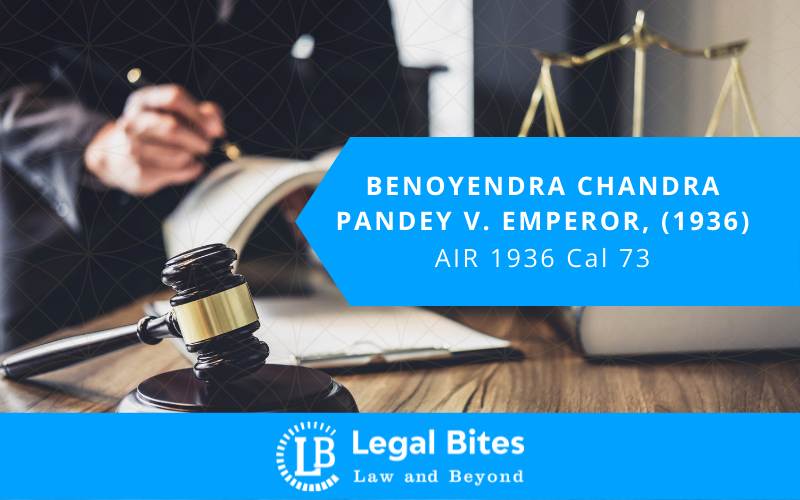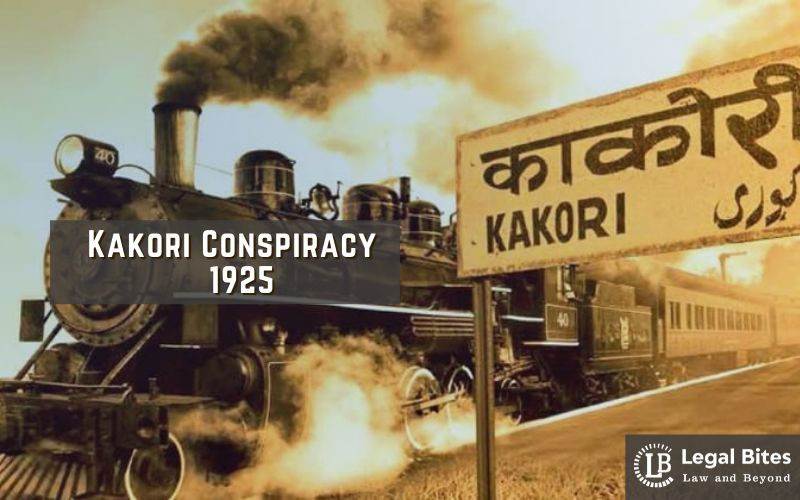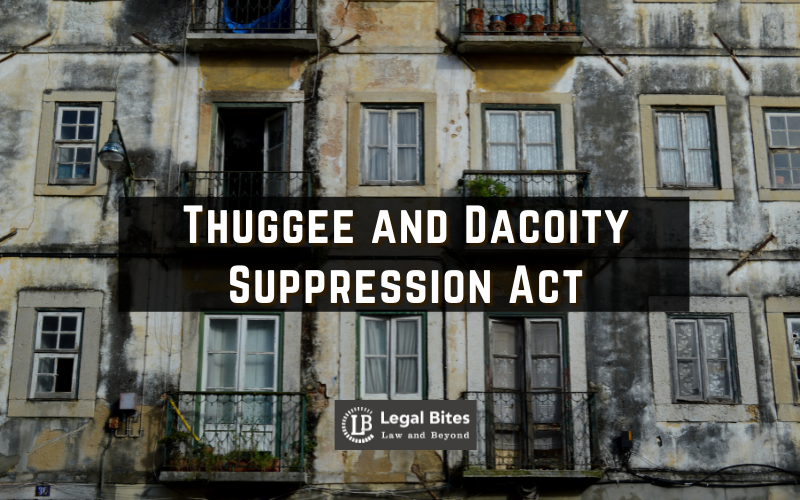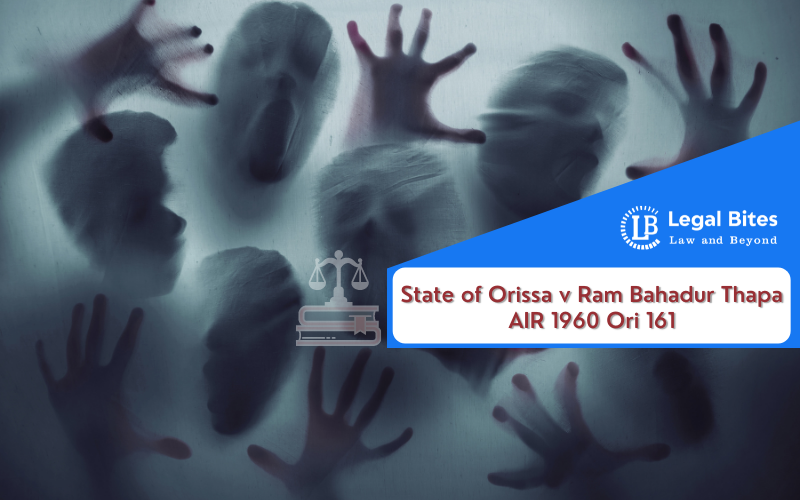Case Analysis on Benoyendra Chandra Pandey v. Emperor, (1936)
This article titled ‘Case Analysis on Benoyendra Chandra Pandey v. Emperor, (1936).’ is written by Antariksh Anant and presents an analysis of the case of Benoyendra Chandra Pandey v. Emperor, AIR 1936 Cal 73. I. Introduction[1] This case revolves around the mastermind of an elder brother who worked his way into killing his younger stepbrother by injecting plague germs… Read More »
;
This article titled ‘Case Analysis on Benoyendra Chandra Pandey v. Emperor, (1936).’ is written by Antariksh Anant and presents an analysis of the case of Benoyendra Chandra Pandey v. Emperor, AIR 1936 Cal 73. I. Introduction[1] This case revolves around the mastermind of an elder brother who worked his way into killing his younger stepbrother by injecting plague germs into him. A hired medical professional was brought into the picture to clinically carry forward the...
This article titled ‘Case Analysis on Benoyendra Chandra Pandey v. Emperor, (1936).’ is written by Antariksh Anant and presents an analysis of the case of Benoyendra Chandra Pandey v. Emperor, AIR 1936 Cal 73.
I. Introduction[1]
This case revolves around the mastermind of an elder brother who worked his way into killing his younger stepbrother by injecting plague germs into him. A hired medical professional was brought into the picture to clinically carry forward the operation.
The crime scene as well as the execution was just ingenuous of the elder brother. This murder case had a clinical point to it and specialists were on the two sides: while some doctors were co-conspirators in the wrongdoing, the other doctors were instrumental in addressing the crime and its complications. It created gigantic public interest in that period, not just in India but also abroad.[2]
II. Background
Benoyendra Chandra Pandey was the stepbrother of Amarendra Chandra Pandey. They both were joint heirs of the property (Pakur Raj Estates) of their deceased father. Their father had married twice and the age of the elder brother and younger brother at the time of their father’s death was 27 and 16 years respectively.
Both the brothers were also joint-heirs to their aunt Rani Surajbati’s property. The elder brother, Benoyendra, became the Karta of the family upon the death of his father. However, his arrogant lifestyle including a relationship with a dancing girl named Balikabala brought disgrace to the family.[3]
Hence, a lot of family members started questioning the fate of Pakur Raj under the careless eye of Benoyendra as he was considered unfit for being the Karta. His apathy was so magnanimous, that he was not even concerned about imparting proper education to his younger brother.
This led to mutual tension and hatred between the brothers. After becoming an adult, Amarendra also started exerting his power and rights which further led to more conflicts.
III. The Real Incident
On 26th November 1933, Amarendra was going to Calcutta from Howrah station. The platform was very crowded and he brushed against a stranger who disappeared in the thick crowd. The injury mark was shown by Amarendra to the family members who showed concern and told him to visit a doctor but this tension was hushed by Bayonendra by stating that their family lineage descended from warriors and hence they were built strong.
This matter was ignored at that moment. After reaching Calcutta, Amarendra experienced a very high fever. A physician found an odd needle mark on his arm and advised a blood culture. After a few days, Amarendra’s whole arm was swollen up and it made him violently ill.
There was another doctor brought by Benoyendra who misled the family into knowing that it was nothing serious. Another couple of days passed and he went into come and one day later, succumbed to his injuries and died.[4]
His death was a very strange occurrence. When the report of the blood culture came in after his death, it was observed that he died of the bubonic plague. The last death that occurred in Calcutta due to bubonic plague was reported 5 years ago.
Later, one of the family members reported the same to the police and that is how the police came into the picture and the investigation of this highly thought murder was initiated.
IV. Investigation
Following the death of Amarendra, a portion of his relatives considered organizing a police request, as it was realized that Taranath Bhattacharjee was on very good terms with Benoyendra. In the long run, a petition was introduced to the Deputy Commissioner of Police, Calcutta around two months on the 22nd January 1934. A sub-inspector, Sarat Chandra Mitra was allotted the undertaking of a private enquiry into the petition.
Benoyendra was arrested, following 24 days of housing of the grievance, on the sixteenth February 1934 in a train while on way to Bombay. A case was officially registered on the following day i.e., on the 17th February, after Benoyendra’s arrest. Durga Ratan Dhar and Sivapada Bhattacharjee and others were additionally accused of plotting to murder Amarendra.
Taranath Bhattacherjee, who boasted his DTM, (Diploma of Tropical Medicine) to which he was not entitled, was arrested on eighteenth February. The inquiry to the same was directed at Bombay and Calcutta. Important, however surprising, data arose in the later inquiries about visits of Benoyendra alone to Bombay in with the companionship of Taranath. The factual matrix of the case led the police to speculate both Benoyendra and Taranath in the murder of one of Pakur Raj’s heirs.
V. The Mind Behind the Conspiracy
It all started when on the directions of Benoyendra, Taranath send an express prepaid telegram to the officials in the Haffkine Institute situated in Bombay requesting some samples of the plague culture for some laboratory tests. However, this attempt went in vain as the institute required the permission of the Surgeon General of Bengal for the same.
Later, Taranath approached Dr Ukil in Calcutta and made him believe that through his research and hard work, he had found the cure for the plague. Upon this information, he requested Dr Ukil to let him work at his lab as a trainee.
The plague culture was eventually obtained by the laboratory from the Haffkine Institute but Taranath was given strict instruction not to handle the same. Eventually, Taranath got a letter of recommendation from Dr Ukil as a reference to the Haffkine Institute that he has discovered the cure of the infamous bubonic plague.[5]
Later in Bombay, after various failed attempts, Taranath and Benoyendra were finally successful in obtaining the plague culture from the institute. They even went to the extent of purchasing rats from the market and experimenting on them the sample of the plague culture.
After the experiment, they found out that it was successful as it had fatally injured the rat. Soon after that, on the pretext of a family emergency, Taranath took leave from the institute and left for Calcutta the same day with Bayonendra and never came back.
Upon inquiry and during the trial, Taranath absolutely denied all allegations regarding the plague culture as well as the trips to Bombay. He further made contradictory statements that he did visit Bombay but not with Benoyendra. Benoyendra too made contradictory statements in front of the court which strengthened the court’s doubt against them.
VI. The Court’s View
In light of facts and conditions as previously mentioned, the Sessions Court granted death sentence to the accused Benoyendra Chandra Pandey and Taranath Bhattacharjee for infusing at Howrah Station plague germs that eventually caused the death of Amarendra.
The condemned accused challenged the order of the Sessions Court under the steady gaze of the Calcutta High Court. The Bench containing Justice Lord-Williams and Justice Nasim Ali heard the reference and appeal. The High Court portrayed the case as “presumably exceptional in chronicles of wrongdoing.” Undoubtedly the case was novel in many regards.
In any case, it was an instance of fratricide so as to wipe out the younger sibling in a presumed zamindar family in Bihar to acquire a monopoly of the family property and fortunes. Furthermore, this murder for gain was imagined by the elder brother in an exceptionally ingenious strategy.
Lastly, the case was extended for a long time, while people, in general, watched the procedures with distinct fascination across India. The accused were arrested in February 1934, were submitted for trial in May and were under trial until February 1935. Two of the accused were given a death sentence. The High Court amended the death sentence to transportation forever.
The High Court reached the conclusion that the two sentenced men, Benoyendra Chandra Pandey and Taranath had contrived to murder Amarendra Chandra Pandey with an employed professional killer. He was given the plague culture brought from Bombay.
Upon the incitement and enticement presented by Benoyendra, the employed men, whose personality couldn’t be demonstrated till the end, infused plague germs in the body of their casualty at the Howrah Station. The immediate consequence of this infusion caused the death of Amarendra Pandey. The intention of the appalling wrongdoing was completely clear.
Benoyendra Pandey needed to dispose of a problematic accomplice in family properties. His endeavour to get Amarendra Pandey’s life insured for a powerful amount of cash shows that separated from financial addition from the murder of his stepbrother, retribution was his principal objective.
The ingenious technique embraced to get rid of Amarendra was probably recommended to Benoyendra Pandey’s companion Taranath[6].
Taranath accepted that it was unthinkable and unreasonable for the police to disentangle the secret of wrongdoing carried out in a spot like Howrah station. Be that as it may, the predetermination didn’t lean toward them and the bare essential of the trick arose openly and the murderers needed to take care of their wrongdoing. The horrible family misfortune closed a shade on the Pakur Raj.
References
[1] Calcutta High Court, Benoyendra Chandra Pandey and … vs Emperor on 10 January 1936. Equivalent citations: AIR 1936 Cal 73.
[2] As mentioned earlier, this case gained notoriety internationally. On February 25, 1935, Time magazine published an article titled “Murder with germs” describing the incident. In this article, the murderer is named as “Benayendra Nath Pandey” although, in the verdict of the Calcutta High Court, his name is Benoyendra Chandra Pand
[3] A. K. Biswas, Understanding Bihar, Blumoon Books, Delhi, 1998, p. 27.
[4] Dr Atulkrishna Biswas, Coronavirus from Wuhan in 2019 Reminds catastrophe plague from Manchuria in 1896 wrought in India: Lessons of History, Mainstream, VOL LVIII No 24, New Delhi, May 30, 2020.
[5] Abdul Hasanat, Crime and Criminal Justice, Dacca, The Standard Library, May 1939, Appendix B, p. 55.
[6] Paul R. Bacteria as a Murder Weapon: A Tale from Colonial Calcutta. Bengal Physician Journal 2019;6(2):37–39.





